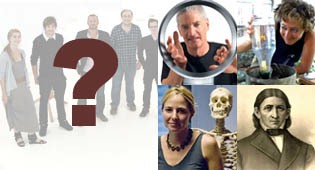












name
Richard Gregory b.1927
working life
1945 -
essentials
Prof. of Neuropsychology at University of Bristol. He set up the Department of Machine Intelligence and Perception (later the Department of Artificial Intelligence) at the University of Edinburgh in 1967, and became Head of the Bionics Research Laboratory, and Professor of Bionics.
He is known for his extensive research on human visual perception, with a special interest in understanding optical illusions and what this tells us how the brain functions.
In 1978 his interest in encouraging public understanding of science led him to found the first UK hands-
info
Through his highly accessible illustrated books he influenced many people outside the academic world of neuroscience. Most students of art and design are familiar Richard Gregory’s first book Eye and Brain, which explored the idea of how optical illusions work and how what we see is not what is actually there, but how your brain interprets the visual message. He explored how the brain's visual system works by looking at the mistakes it makes -
Fundamentally it was great to find a scientist interested in visual phenomena, take it seriously as a subject worth researching, and also have a good laugh at all the jokes, curiosities and conundrums.
He said:
“Less than 10% think that knowledge of science is important in everyday life" from a survey in the BBC documentary 'Are we Blind to Science?’
"We have a responsibility to foster curiosity and experimentation -
"Children are scientists in the making -
books
• Eye and Brain -
first publ. 1966 -
• Mind in Science by Richard Gregory
first publ. 1981 -
• Mirrors in Mind by Richard Gregory
publ. 1997 -
• Seeing Through Illusions by Richard Gregory
publ. 2009 -
see more:
• The wikipedia entry for Richard Gregory
https://en.wikipedia.org/wiki/Richard_Gregory
• Exploratorium in Bristol
• Exploratorium in San Fransisco